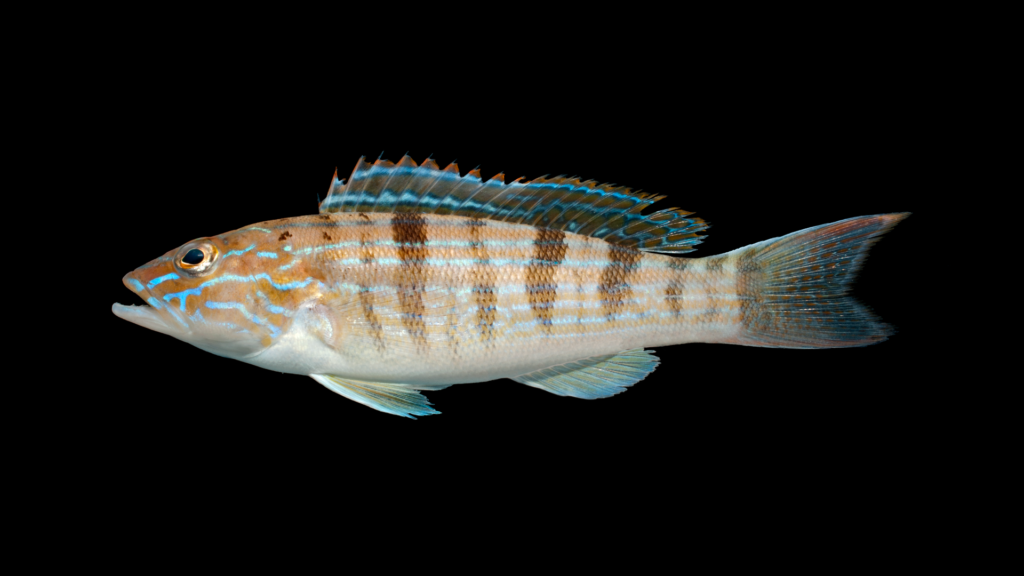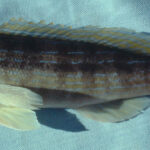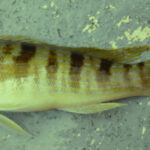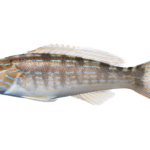
| Family | Scientific Name | Author | Year | Common Name |
| Serranidae | Diplectrum formosum | (Linnaeus) | 1766 | Sand Perch |
All Diplectrum — Dorsal fin with 10 spines and 11-13 rays. Anal fin with 3 spines and 6-8 rays. Most of upper edge of operculum free, not connected by skin to body. Caudal fin emarginate. Head larger, its length contained 2.3-3.3 times in standard length. Preopercle without a large antrorse spine in most species; middle opercle spine not reaching edge of operculum. Front nostrils variously shaped, but always closer to rear nostrils than to upper lip. Supramaxilla absent. Teeth fixed (not depressible). No scaly flap of skin joining upper part of pectoral-fin base to body. Soft dorsal and anal fins mostly naked (hence the rays are easy to count).
Diplectrum formosum
Unique Characters: Preopercle expanded posteriorly, serrae distinctly enlarged or spinous. No scales on dorsal fin. Preopercle with 2 clusters of spines (enlarged serrae). Cheek-scale rows (from eye to rear lower corner of preopercle) 10-15. Lateral-scale series 66-88.
Similar Species: Dwarf Sand Perch Diplectrum bivittatum. Preopercle expanded posteriorly, serrae distinctly enlarged or spinous. No scales on dorsal fin. Preopercle with 1 cluster of spines. Cheek-scale rows 7-12. Lateral-scale series 54-75.
Gallery


